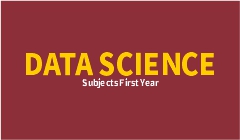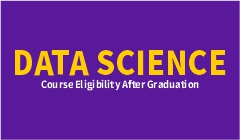
It's tough to initiate a career in data science for freshers, particularly when it comes to acquiring practical experience. One of the best possible ways to break into the field is through a data science internship. Internships not only provide an opportunity to use theoretical concepts to real-world problems but also lead the way to full-time job opportunities. As decision-making based on data is becoming the backbone of sectors such as finance, healthcare, retail, and IT, freshers are increasingly looking for "how to get internship in data science for beginners", "data science internship without experience", and "data science internship opportunities for freshers" online.
If you are a fresher who wants to establish a career in data science, this blog will walk you through each step on how to get the correct internship, skills needed, where to apply, and how to position yourself as an excellent candidate.
Before we explore the process of getting an internship, let's explore why data science internships are so important:
Skills Freshers Need to Get a Data Science Internship
To vie in the industry, freshers need to work on building technical skills as well as soft skills. Here are some essential skills to include in your profile:
1. Technical Skills
2. Soft Skills
Steps to Obtain a Data Science Internship as a Fresher
1. Establish a Solid Foundation in Data Science
Begin by learning the fundamental subjects of data science like programming, statistics, and machine learning. You can enroll in online courses, bootcamps, or become a part of formal data science training programs in order to have a solid grasp of the basics.
2. Engage with Real-Time Projects
Develop mini-projects like:
These mini-projects can be included in your resume and GitHub profile to indicate your hands-on experience.
3. Build a Solid Resume and Portfolio
Your resume must emphasize skills, certifications, and projects, even if you do not have experience working. Include:
4. Make Use of Online Platforms to Find Opportunities
Internships can be applied for by freshers through various means:
5. Startups and Small Companies: Apply to Them
Startups are more willing to recruit freshers as interns than large corporations. They give you real-world experience with various aspects of data science projects.
6. Practice for Internship Interviews
Be prepared to respond to data science interview questions for freshers, including:
Best Tips to Increase Your Chances of Getting a Data Science Internship
Mistakes Freshers Make When Applying for Data Science Internships
How Internships Pave the Way to a Data Science Career
For the new entrants, an internship usually leads to a data scientist job on a permanent basis. Successful interns are usually inducted into the organization post-internship. Even otherwise, the certificate of internship, portfolio, and references become valuable points for prospective applications.
Internships also provide clarity regarding different jobs in data science, including:
Future Scope of Data Science Internships for Freshers
As companies are going data-driven, the demand for data science experts is increasing across industries such as:
This makes data science internships for freshers in India a sought-after career option in 2025 and beyond.
Conclusion
Obtaining a data science internship as a beginner can sound like a competition, but with proper skills, projects, and strategy, it is totally possible. Prioritize learning fundamental skills, portfolio development, networking, and strategic application. Don't forget, internships are not merely about work experience—internships are the starting point for a successful data science career.

Introduction
Data Science has emerged as the most sought-after profession for students worldwide. As companies continue to produce copious amounts of data, the demand for individuals with expertise in analyzing, interpreting, and implementing data-driven insights is swiftly on the rise. If you are going to develop a career in this field, it is the first-year data science subjects that need to be understood. The initial year of a data science program, whether undertaken as a degree, diploma, or certification, familiarizes students with the underlying ideas, programming skills, and mathematical foundations that are required to move forward in subsequent years.
What we shall be discussing in this blog is:
Why Focus on Data Science First-Year Subjects?
The first year is also very important because it lays the ground for advanced topics such as Artificial Intelligence (AI), Machine Learning (ML), Big Data, and Deep Learning. It becomes difficult for students to perform in later phases if they do not master these foundation subjects.
The most important reasons why data science courses in the first year are so crucial:
Core Data Science Topics in Year 1
The initial year of a data science course curriculum often features a combination of mathematics, computer science, statistics, and basic data science topics. The following are the most typical subjects:
1. Introduction to Data Science
2. Mathematics for Data Science
Why important?
Mathematics is the backbone of machine learning algorithms and statistical modeling.
3. Programming for Data Science (Python / R)
Why important?
Programming enables students to deploy algorithms, work with datasets, and automate tasks.
4. Statistics and Probability
Why important?
Statistics assist in making precise predictions, creating models, and examining patterns in data.
5. Database Management Systems (DBMS)
Introduction to databases
Why significant?
Nearly every organization keeps data in databases, so SQL and DBMS skills are very much required for data science endeavors.
6. Data Visualization Fundamentals
Why significant?
Assists students in learning to communicate insights clearly to technical and non-technical audiences.
7. Computer Science Fundamentals
Why important?
Data structures and algorithms enhance problem-solving effectiveness and are the foundation of sophisticated ML methods.
8. Communication and Professional Skills
Why important?
Data scientists need to convey findings clearly and facilitate ethical use of data.
Elective or Supporting Subjects in First Year
A few colleges also have other subjects as part of the strengthening process:
First Year Data Science Practical Components
Some common lab activities are:
First Year Mini Project Ideas for Data Science Students
To build practical knowledge, most colleges make the students work on basic projects in the first year. Some of them are:
Skills Students Gain in First Year of Data Science
At the end of the first year, the students acquire:
Relevance of First Year Topics to Careers
All first-year topics are relevant to the skill sets of data science professionals:
Tips to Thrive in Data Science First Year
Future Roadmap After First Year
Once you've finished the first-year data science courses, you'll be ready for more specialized topics in the second year and beyond, including:
Conclusion
The first year of a data science degree is all about laying a solid foundation in mathematics, programming, statistics, and computer science. Students must take this stage seriously, as it lays the foundation for higher learning in the following years. By covering both theory and practical aspects, learners are able to acquire the skills to thrive in data science.
If you are going to pursue a career in this area, becoming an expert in first-year data science topics will empower you to go ahead with sophisticated tools, algorithms, and business projects.

Introduction
Data Science has become one of the most sought-after career options in this present digital era. With sectors such as healthcare, finance, retail, manufacturing, IT, and education heavily depending on data-driven decisions, the need for data scientists is increasingly on the rise. If you've just graduated and are wondering about the next step, one of the most searched questions is: "What is the eligibility for a data science course after graduation?"
This blog is a comprehensive guide regarding data science course eligibility upon graduation, including qualifications, minimum skills required, career scope, course patterns, and how graduates with various streams such as Engineering, Commerce, Arts, and Science can shift to data science. This will be helpful for you if you're a graduate who wants to establish your career in this sector.
Why Choose Data Science After Graduation?
Before discussing eligibility criteria, let us briefly know why data science is the chosen career for graduates:
Data Science Course Eligibility After Graduation
Eligibility criteria for data science courses differ from the institute and course type (certification, diploma, postgraduate, or online course). Nevertheless, some general factors hold:
1. Educational Qualification
2. Technical Background
3. Key Skills Needed
Although graduation is the bare minimum qualification, possessing the below skills makes applicants more desirable:
Who Can Enroll in a Data Science Course After Graduation?
All graduates are curious to know whether their qualification permits them to shift to data science. Let's consider the eligibility stream-wise:
1. Engineering Graduates
2. B.Sc. Graduates (Mathematics, Statistics, Physics, or Computer Science)
3. Commerce & Management Graduates (B.Com, BBA, MBA)
4. Arts Graduates (Economics, Social Science, Humanities)
Skills You Need to Become Eligible for Data Science After Graduation
While academic qualification guarantees the eligibility, recruiters also look for practical skills. Some must-have skills are:
Data Science Courses Available After Graduation
After graduation, you can opt for several data science courses based on your career aspirations:
1. Certification Programs
2. Diploma Programs
3. Postgraduate Degree (M.Sc, M.Tech, MBA in Data Science)
4. Data Science Courses Online
Final Year Students vs. Graduates: Eligibility Clarification
Numerous students wonder if they can study data science during their last year of graduation. The response is affirmative. Most institutes permit final-year students to join certification courses, but graduation is compulsory before they award the last certification.
Advantages of Studying Data Science after Graduation
Frequently Asked Questions on Data Science Course Eligibility
1. Is it possible for a B.Com graduate to do a data science course?
Yes, commerce graduates can do it. They might have to prepare by acquiring programming and statistics skills beforehand.
2. Is mathematics a requirement for data science courses?
Yes, some basic math and statistics knowledge is required.
3. Do I require coding experience to sign up?
Not really. Most entry-level data science courses introduce students to Python, R, and SQL from scratch.
4. Can I pursue data science after MBA?
Yes, MBA graduates with business intelligence and analytics interest can opt for data science.
5. Is work experience a requirement?
No, recent graduates can also apply. But internships or project experience assist in getting jobs.
Step-by-Step Blueprint for Graduates to Join Data Science
Career Opportunities After Data Science Course
When you become eligible and undergo your training, you can consider the following career opportunities:
Conclusion
Data science is among the most promising career options for graduates nowadays. No matter if you are from science, engineering, commerce, or arts, you can pursue a data science course after graduation. There is only one condition that differs in the skills you have to acquire based on your educational background.
By meeting the graduation eligibility criteria for a data science course, developing programming and analytical capabilities, and having hands-on experience with projects, you can transition into a fruitful career in data science.
If your career is important to you, begin your learning process now and take your first step in becoming an expert data scientist.